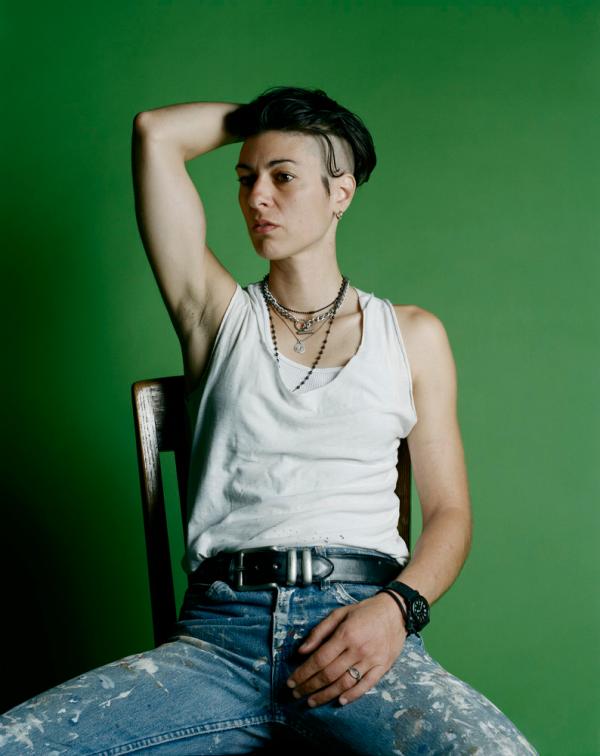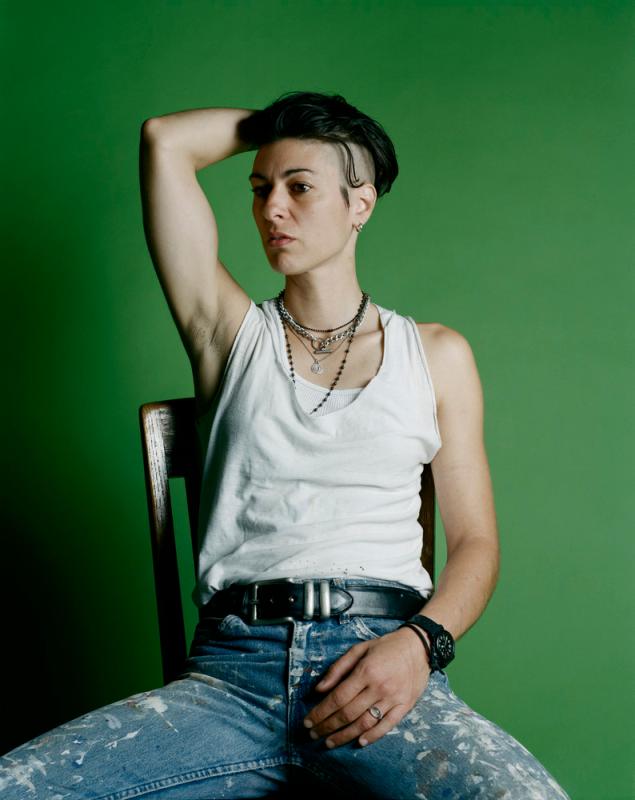Skip to main content
Diane di Masa
Artist
Catherine Opie
(American, born 1961)
Date1994
MediumChromogenic print
DimensionsImage: 18 1/4 x 14 3/8 in. (46.36 x 36.51 cm)
Sheet: 20 x 16 in. (50.8 x 40.64 cm)
Framed: 20 3/4 x 16 3/4 x 2 in. (52.71 x 42.55 x 5.08 cm)
Sheet: 20 x 16 in. (50.8 x 40.64 cm)
Framed: 20 3/4 x 16 3/4 x 2 in. (52.71 x 42.55 x 5.08 cm)
Credit LineCollection of the Modern Art Museum of Fort Worth, Museum purchase, The Friends of Art Endowment Fund
Object number2014.34
Status
Not on viewCopyright© Catherine Opie
Category
Label TextThe photographer Catherine Opie engages traditions of artistic representation to depict subjects not traditionally represented in the history of art. Whether documenting the Los Angeles queer community, nondescript mini-malls, California’s surfing subculture, Middle America’s high school football teams, or scenes from her own domestic life, Opie has dedicated her work to portraying the people and places around her with dignity and compassion.
Portraits, 1993–97, is a group of fifty studio portraits in which Opie positioned her models against bright, solid-colored backgrounds in the tradition of the Northern Renaissance court painter Hans Holbein the Younger (1497/98–1543). Wearing a tank top and jeans and sporting a half-shaved hairstyle, the eponymous sitter in Diane di Masa, 1994, stares away from the camera with a gaze of introspective intensity. Her punk sensibility and open body language—one arm held behind her head with elbow flared, legs spread open to the camera—communicates confidence and strength. The green backdrop is dazzling—a formal convention Opie used to elevate and enhance the visibility of Diane di Masa, an individual and a member of a community rendered marginal, if not invisible, by mainstream society.
Opie’s work is a document of its time in America, inviting viewers to look closely at people and places that may be unfamiliar to our own experiences. By celebrating our singular identities, her images underscore the connections between us.
Portraits, 1993–97, is a group of fifty studio portraits in which Opie positioned her models against bright, solid-colored backgrounds in the tradition of the Northern Renaissance court painter Hans Holbein the Younger (1497/98–1543). Wearing a tank top and jeans and sporting a half-shaved hairstyle, the eponymous sitter in Diane di Masa, 1994, stares away from the camera with a gaze of introspective intensity. Her punk sensibility and open body language—one arm held behind her head with elbow flared, legs spread open to the camera—communicates confidence and strength. The green backdrop is dazzling—a formal convention Opie used to elevate and enhance the visibility of Diane di Masa, an individual and a member of a community rendered marginal, if not invisible, by mainstream society.
Opie’s work is a document of its time in America, inviting viewers to look closely at people and places that may be unfamiliar to our own experiences. By celebrating our singular identities, her images underscore the connections between us.














